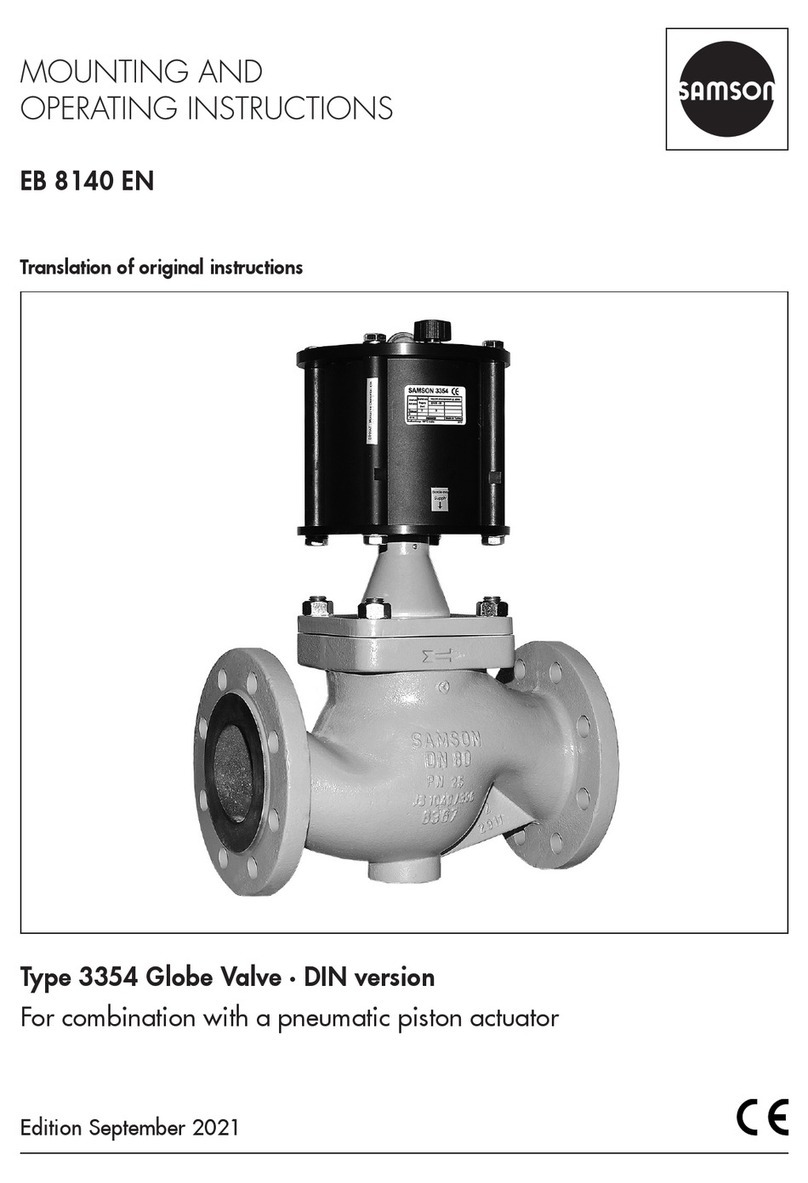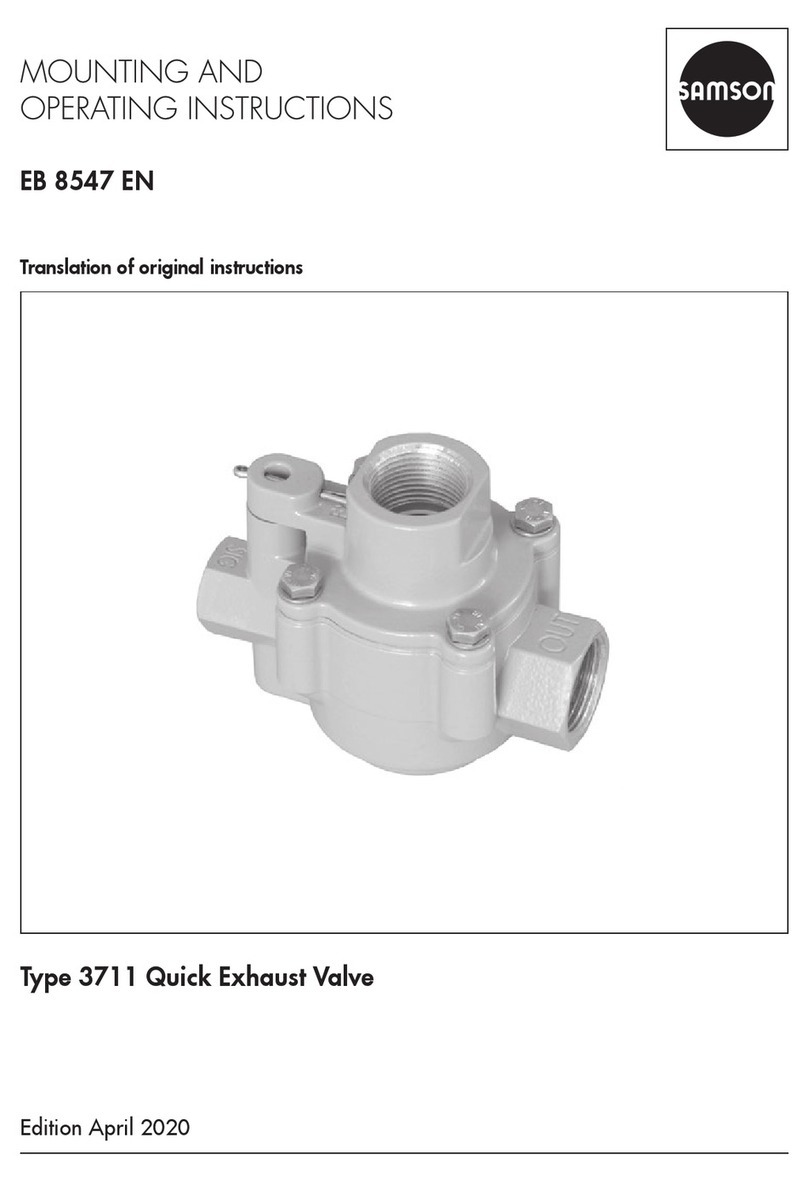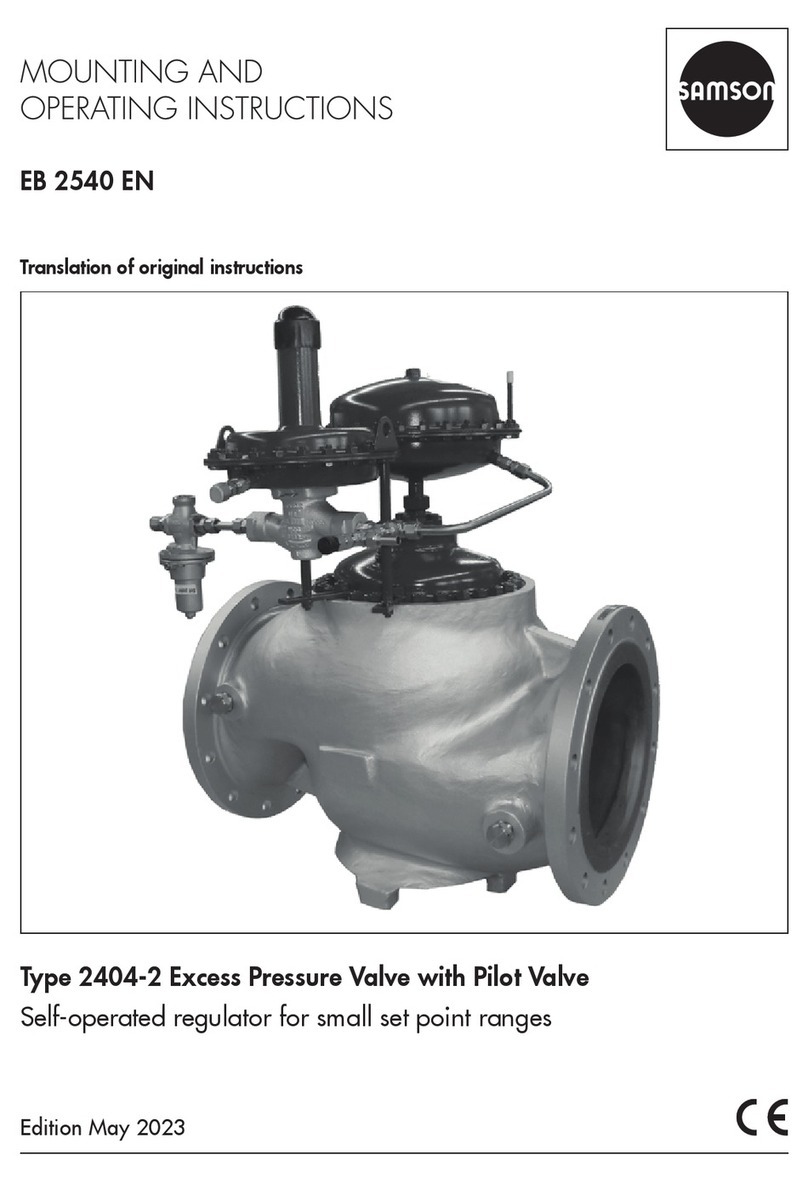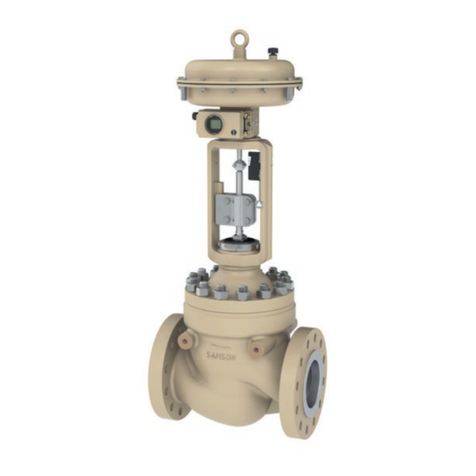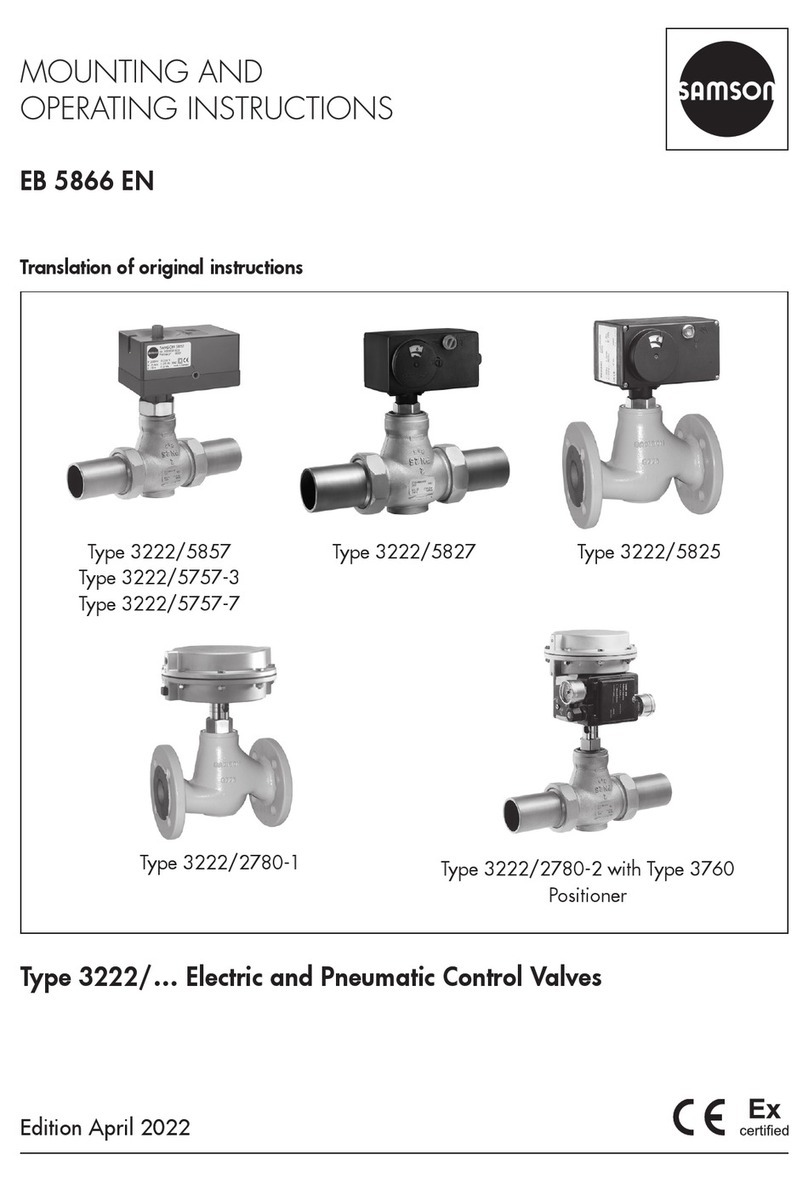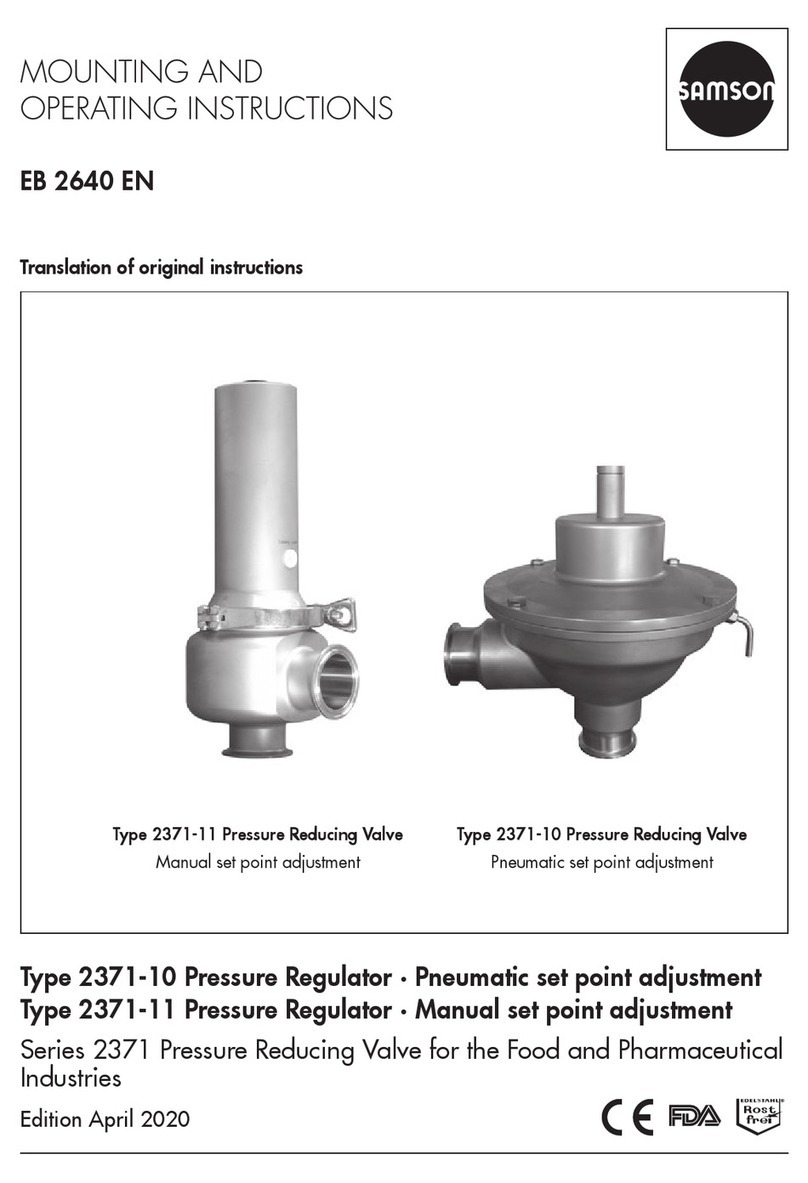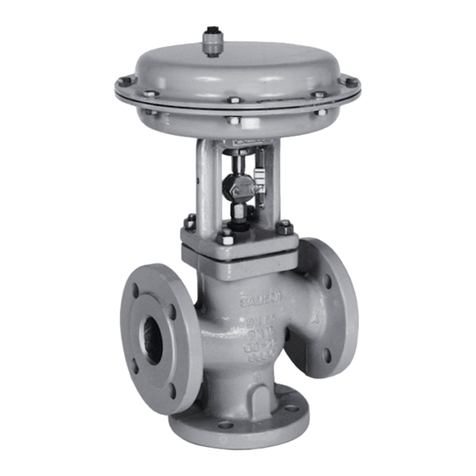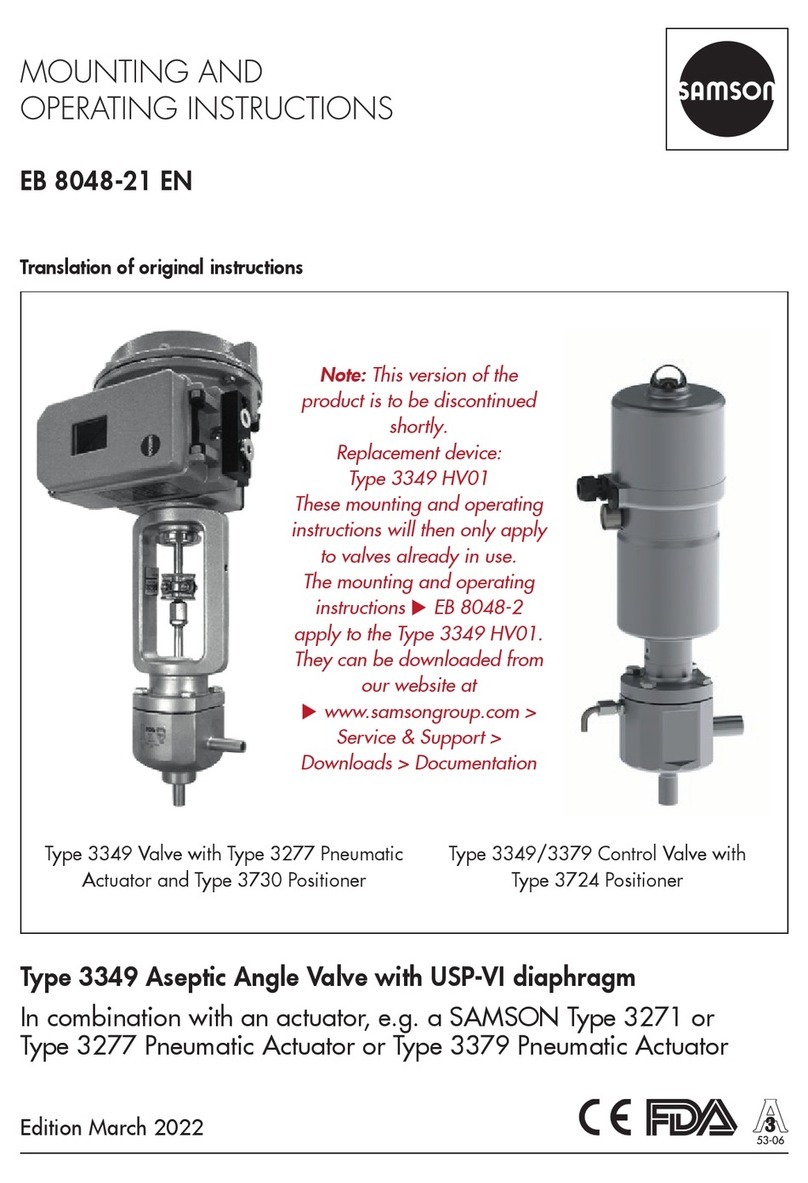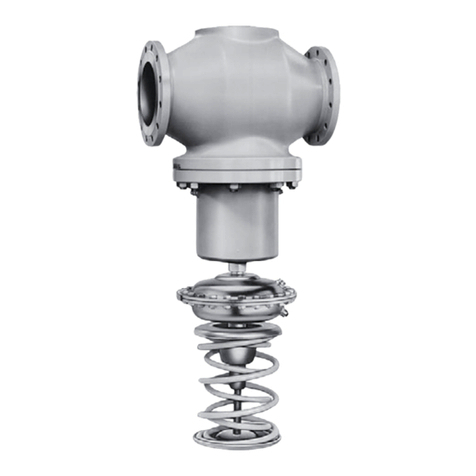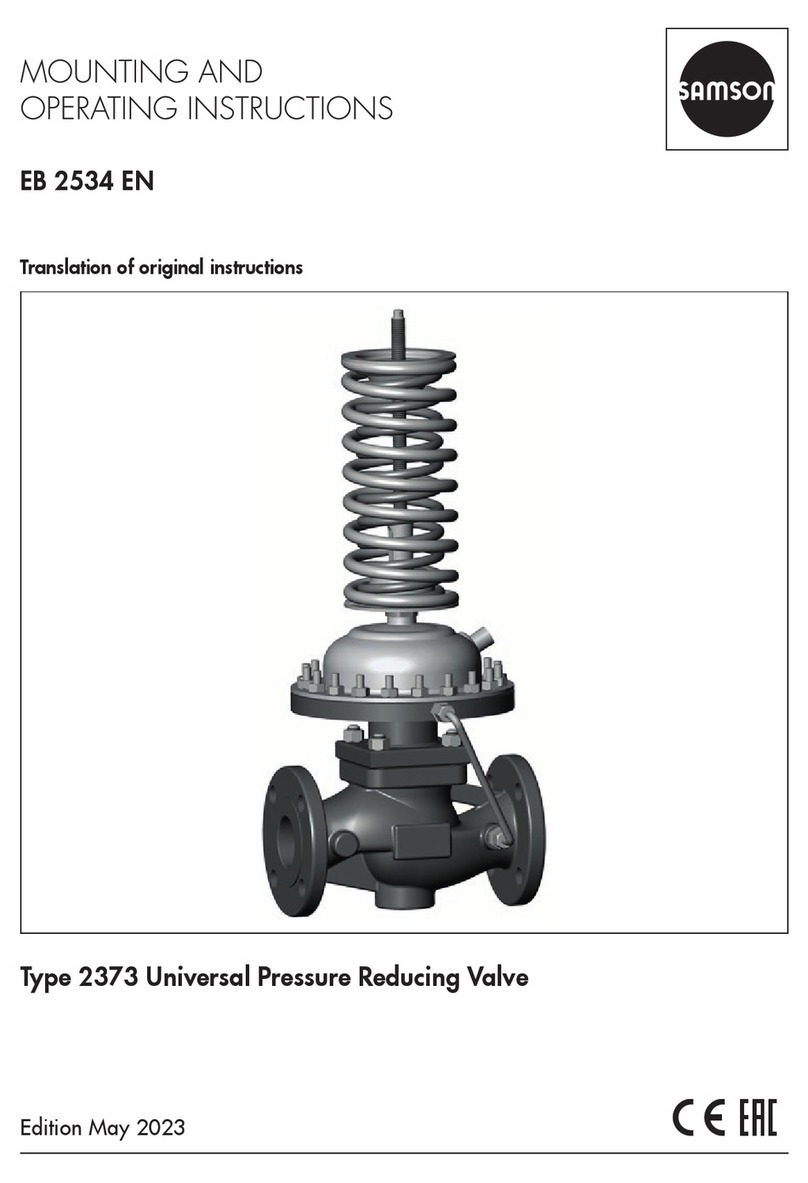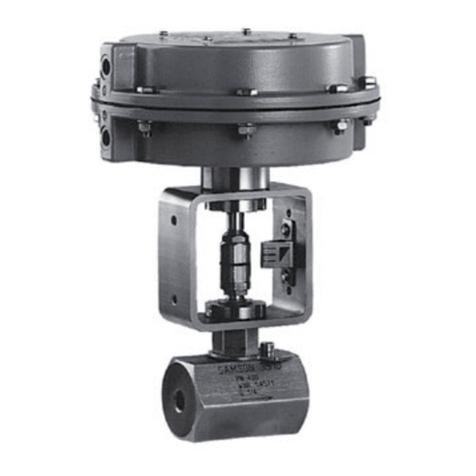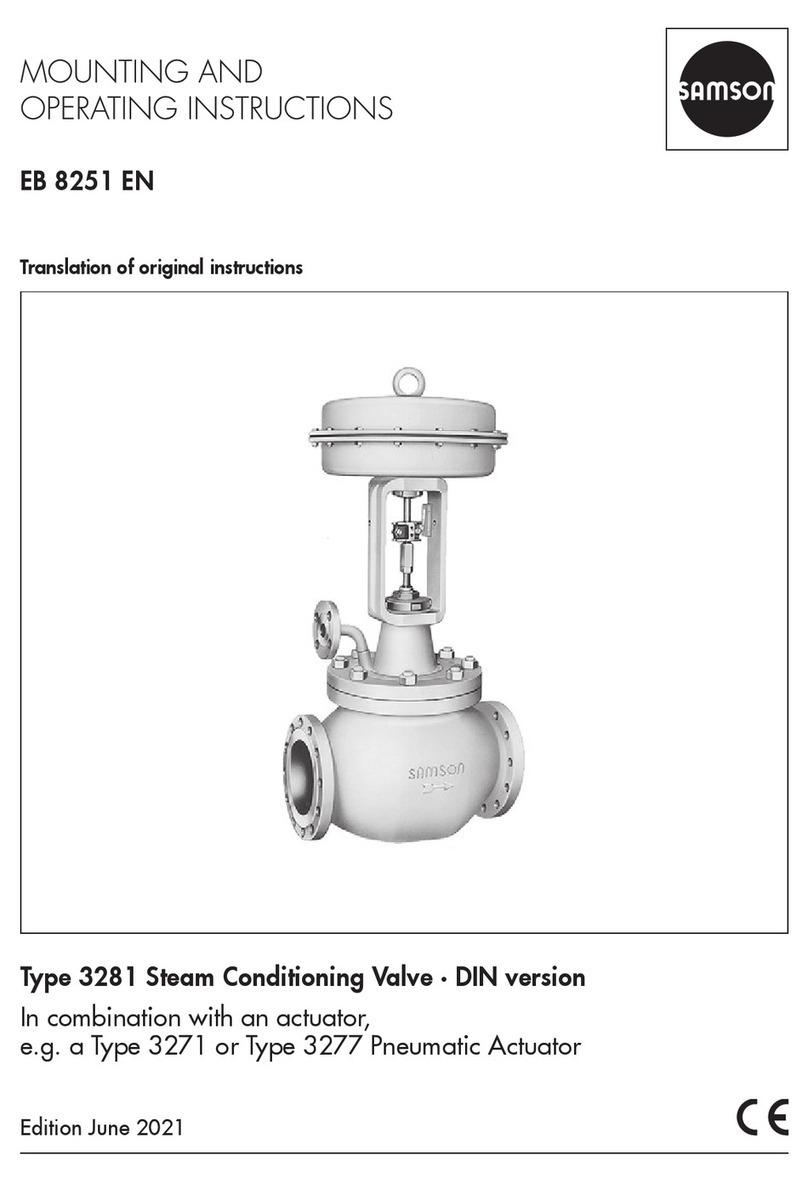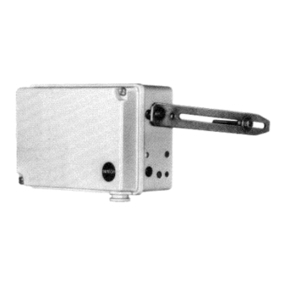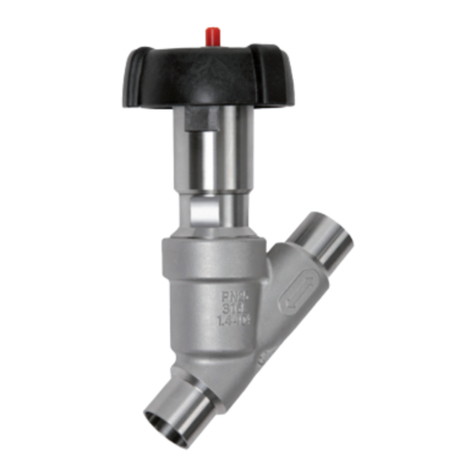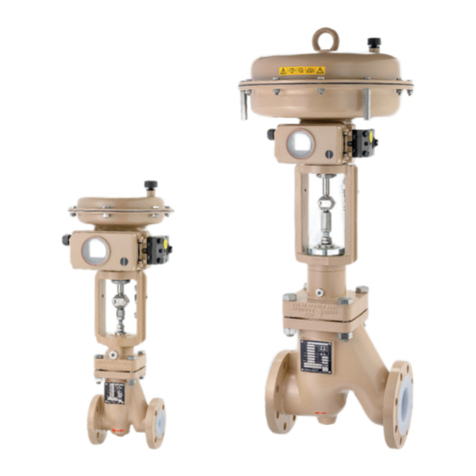
1-1
EB 20b_EN
February 2022 edition
Subject to technical changes
Safety instructions and safety measures
1 Safety instructions and safety measures
Intended use
The PFEIFFER ball valve BR 20b is manually operated in combi-
nation with an actuator for the regulation of the volume flow,
control and regulation of fluid, gaseous or vaporous media.
−The ball valve and its actuator are designed for precisely de-
fined conditions (e.g. operating pressure, utilised medium,
temperature).
Therefore the operator must make sure that the ball valve is
only used when the conditions of use comply with the design
criteria defined in the order, see also the pressure-tempera-
ture diagram.
If the operator would like to use the ball valve in other appli-
cations or environments, they must contact PFEIFFER.
−Manual ball valves are only intended for use, after installa-
tion in a pipe system, to cut off the media, let it flow through
or regulate it within the permitted pressure and temperature
limits.
−Automated ball valves are only intended for use, after instal-
lation in a pipe system and after connecting the drive to to
the control, to cut off the media, let it flow through or regulate
it within the permitted pressure and temperature limits.
−The data sheet contains the permissible pressure and temper-
ature range for these ball valves TB20b.
−The safety regulations that apply to the pipe system in which
the valves are installed and to the control system to which the
actuator is connected also apply to the ball valves.
This manual only provides safety instructions that are to be
observed additionally for ball valves.
There may be additional safety instructions in the manuals for
the actuator assemblies.
−It is assumed that this chapter is observed when using the
valve as intended.
Reasonably foreseeable erroneous use and unintended use
The ball valve is not suited for the following areas of use:
−Use outside of the technical data and the limits defined by the
design.
−Use outside of the limited defined by the peripheral devices
installed on the ball valve.
−Use outside any further limiting performance data on the
type plate.
Furthermore, the following activities are considered unintended
use:
−Use of third-party spare parts.
−Performance of maintenance and repair work that is not de-
scribed.
Qualification of operating personnel
The ball valve may only be disassembled, dismantled, assembled
and commissioned by qualified specialist personnel trained in
pressurised pipes who are familiar with the assembly, commis-
sioning and operation of this product.
−Specialist personnel in terms of this installation and operating
manual are persons who, on the basis of their vocational ed-
ucation, knowledge and experience and knowledge of the
relevant standards, are capable of evaluating the assigned
tasks and identifying possible hazards.
Personal protective equipment
Depending on the utilized medium, PFEIFFER recommends the
following protective equipment:
−Protective garments, protective gloves and eye protection
when using hot, cold, aggressive and/or corrosive media.
−Hearing protection when working near the valves.
−Request additional protective equipment from the plant oper-
ator.
Prohibition of modifications
Changes to the product are not permitted without consulting
PFEIFFER. Non-compliance invalidates the product guarantee.
PFEIFFER shall not be held liable for any resulting property dam-
age or personal injury.
Protective devices
In the case of a power supply failure, the automated ball valve
automatically switches to a certain fail-safe position, see Fail-safe
positions”in Chapter “3 Design and principle of operation”.
−The fail-safe position corresponds to the effective direction
and is indicated on the type plate of PFEIFFER actuators, see
the actuator documentation.
−The valve is to be included in the equipotential bonding of the
plant.
Warning of residual risks
To prevent personal injury or property damage, the operator and
operating personnel must use suitable measures to prevent the
hazards that can result from the flow medium and operating
pressure as well as the signal pressure and moving parts of the
ball valve.
−Therefore, the operator and operating personnel must ob-
serve all the hazard information, warning information and
information in this installation and operating manual.
Obligation of the operator to exercise diligence
The operator is responsible for proper operation as well as com-
pliance with the safety regulations.
−The operator is responsible for providing operating personnel
with this installation and operating manual as well as the ap-
plicable documents and to provide instructions on proper op-
eration.
−Furthermore, the operator must ensure that operating person-
nel and third parties are not endangered.
It is not the responsibility of PFEIFFER and therefore when using
the ball valve ensure that:
